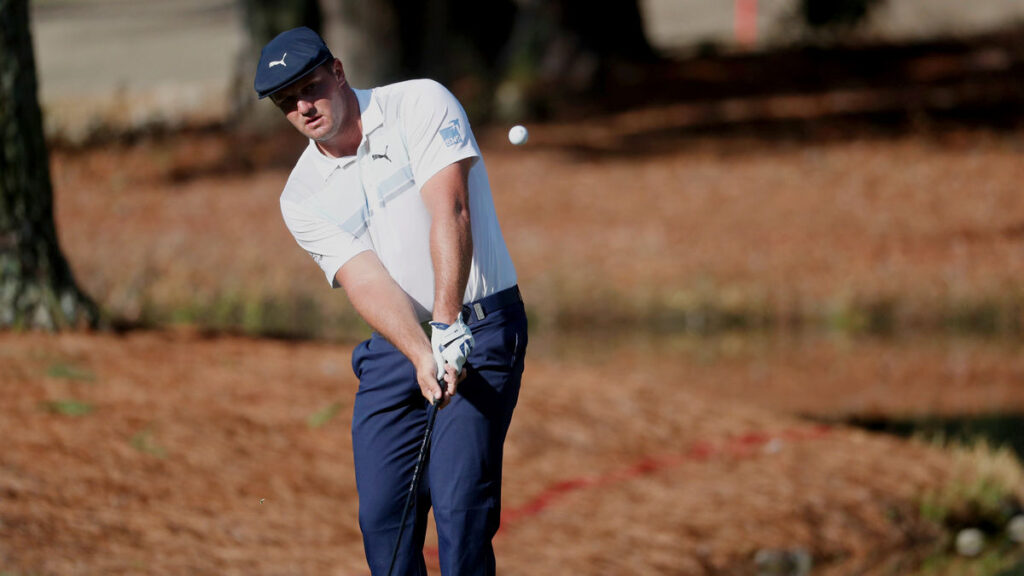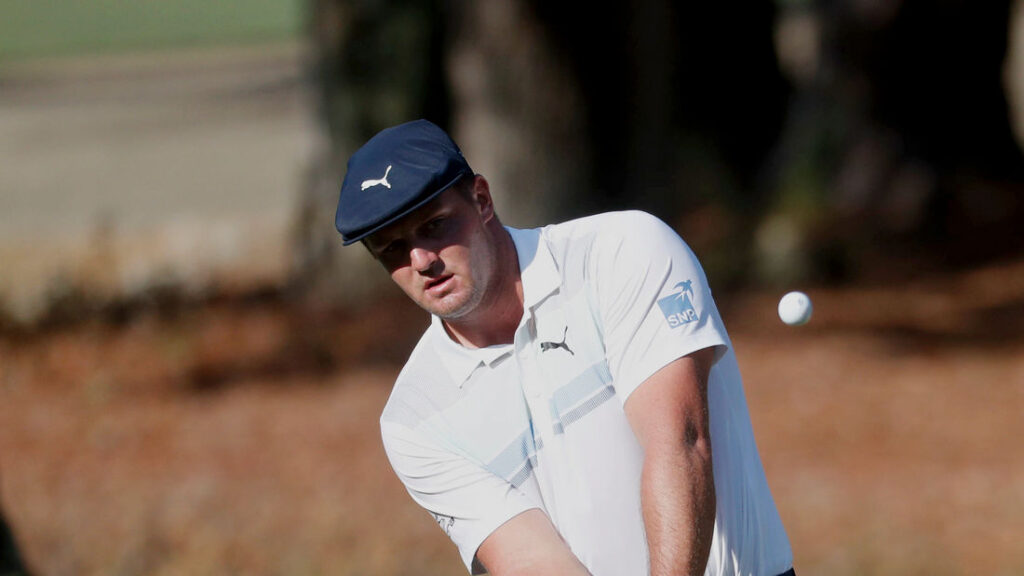
Despite finishing no higher than in a tie for seventh in the Sentry Tournament of Champions which concluded in Hawaii on Sunday evening, Bryson DeChambeau has done more than anyone else to set the pace of play when it comes to talking about professional golf in 2021. The current US Open champion used to weigh 13st 8lbs but he’s added getting towards four stone on top of that. A couple of seasons ago his swing created a ball speed of just over 170 mph. Apparently he’s now getting to 210 mph on the range. Where will it all end?
Over the Christmas period I read a book called Golf’s Holy War: The Battle for the Soul of the Game in an Age of Science. It’s written by a guy called Brett Cyrgalis. You might guess that DeChambeau gets a look-in. And he does. Within the first 25 words of Chapter One, the author has referenced The Golfing Machine, the singular instruction book published in1969 by Homer Kelley. One gathers it’s Bryson’s go-to bedtime reading.
Towards the end of the book you will arrive at this sentence. “In March of 2013, the CERN institute in Switzerland released their findings from an earlier experiment at the Large Hadron Collider, a 17-mile tube that runs underground over the Swiss-French border.” You will probably have heard of that, even if precious few people can understand its work: bashing protons together at immense speeds to find eventually the Higgs boson, or ‘God particle’ as some call it. Essentially, it explains how the universe works.
Longest drives of the week @Sentry_TOC. 😯
— PGA TOUR (@PGATOUR) January 11, 2021
424 – @Cameron__Champ
421 – @Cameron__Champ
414 – @B_DeChambeau
405 – @B_DeChambeau
404 – @Cameron__Champ
403 – @AdamScott
401 – @JustinThomas34
400 – @B_DeChambeau
399 – @Cameron__Champ
397 – @JonRahmPGA / @NTaylorGolf59 pic.twitter.com/Ied1IcRWxX
And how did we get to there from a golf course at Kapalua? Among the scientists to have worked at CERN (it’s the European Organisation for Nuclear Research) is Professor Ryszard Stroynowski. Among his students at Southern Methodist University in Dallas was Bryson DeChambeau.
“Part of my class involved asking students to deliver a lecture,” the professor told Oliver Brown of the Daily Telegraph. “Bryson gave his on proton decay, which is not an observable quantity. Protons don’t decay and we don’t know why. But he covered everything, including how people design these large experiments to look for it [the answer]. He never missed a detail.” Remind me not to question the thinking behind DeChambeau’s decision to have all his irons measure the same length.
DeChambeau, who is 27, is working on adding more length to his game. He has recently spent some time with Kyle Berkshire, the world long-drive champion, whose ball-speed record is at 228 mph. “I want to be where Kyle’s at,” DeChambeau told The Golf Channel last week. Whether you regard phrases that are often applied to DeChambeau – ‘the Incredible Bulk’ and ‘the Mad Scientist’ – as compliments or the contrary, one has to admire his constant search for improvement. Also perhaps look forward even more to whatever it is the R&A and USGA will be saying in the spring when it comes to reining in – or not! – the distance the modern tour player can hit the ball.
You can follow Robert Green on Twitter @robrtgreen and enjoy his other blog f-factors.com plus you can read more by him on golf at robertgreengolf.com
